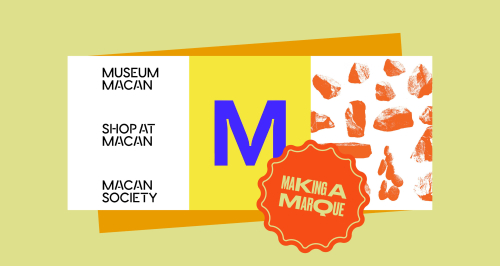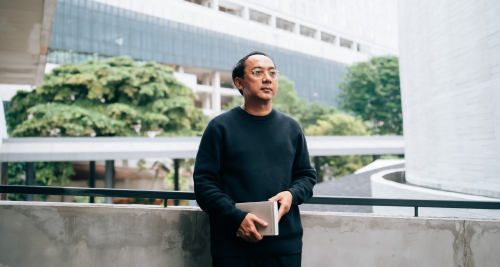Spotlighting Southeast Asian Typography through The Southeast Asian Types No.1
Consistent in their mission to continue releasing printed publications, Further Reading has published Further Reading Zine Series: The Southeast Asian Types No.1. This publication showcases artworks, interviews, and essays revolving around typography from practitioners in the Southeast Asian region. According to Januar Rianto, chief editor and creative director of this publication, the initial idea for the zine was sparked by Further Reading Print No.3: Down South, Outgazing Our Views, which was published back in 2021. He said that, in that publication, there were a few contributions or essays focused on typography, language, culture, and theory interconnectedness with socio-political conditions. “From there, we saw the potential for this discipline or topic to be specifically revisited and so The Southeast Asian Types publication series was born for the first time this year,” he explained.
Januar stated that this publication is intended to become a publication that specifically spotlights the developments of the discipline and industry of type design in Southeast Asia and is hoped to be a thorough reference for the type design community as well as graphic design in general. This publication seems to be a concrete form of Further Reading’s focus on and interest in Southeast Asia. Januar elaborated, “Since the conception of Further Reading in 2017, [our] interest in Southeast Asia has always been there. A year later, we began researching and studying it more. Then in 2019, since our publication unit was formed [Further Reading], we decided to allocate more focus on Southeast Asia and its correlation or interconnectedness with the world beyond.”
In this series, Further Reading invited Aditya Wiraatmaja concurrently as an editor and editorial designer. Personally for Adit, his initial involvement encompassed creating a list of contributors, acting as a curator, and determining the content to be delivered in The Southeast Asian Types No.1. “We determined early on that the contents [of this publication] would include interviews, artworks, and essays. So, those three components we fixed from the beginning to be included. From there, I helped develop [the content]. Deciding just which contributors would be the right fit for each part,” Adit explained.
The prime volume of this publication involved 23 contributors from Indonesia, Malaysia, Singapore, Thailand, the Philippines, and Vietnam. Adit mentioned that he’d come across and interacted with a majority of the contributors abroad beforehand, at least through social media. According to Adit, there were no particular requirements when selecting and inviting contributors. For him and the Further Reading Team, a diverse line up of contributors was the main point to be achieved. Meanwhile, for the theme, Januar stated, “From the initial planning and arrangement of content, we focused more on looking for contributors or people who we deemed as relevant either in terms of the editorial direction or relevant to Further Reading and its readers. Only then, after working on this for about a year, did a common thread emerge on its own which leaned towards typography and its vernacularity.”

Like other titles from Further Reading, The Southeast Asian Types No.1 was produced with the risograph printing method. Januar said,”After we were able to buy our RISO machine in 2021, we began to really intensely study and look up stencil printing as a work method and strategy as an independent publisher.” In Januar’s view, this is a preservation and commitment of Further Reading Press as an independent publisher that involves an alternative printing method.
“Even from a design perspective there was no particular direction. Pragmatically, it was pointed more towards technique and the effectiveness of the visuals and production, like [considerations of] material use. One can say that Further Reading never really sets a particular “creative direction” for the design of our publications,” Januar explains. “The design present or formed always takes off from the response to the contents and the understanding of the content regarding the form and format of the publication itself. From that understanding and intention, for me, the creative direction and design will emerge ‘on its own’ because it is a byproduct of the entirety of the editorial process from the beginning.”
For Adit, his involvement in this project is part of his intention to introduce the scripts and writing cultures of Indonesia in particular and Southeast Asian on the whole. With Further Reading’s broad scope of readers, Adit hopes this publication will raise public awareness of the diverse range of Indonesian and Southeast Asian typography. The discourse around typography in Southeast Asia delivered by this publication shows how the culture of each area and local typography are intertwined. The Southeast Asian Types No.1 can also be a way to peer into the rich cultures of Southeast Asia as well as a new vantage point in the discussion of typography which tends to point towards the Western World. This first edition deserves its roses and for its following editions to be eagerly anticipated, keeping in mind this publication will be a special series by Further Reading.
Early last November, Further Reading was invited to present this publication at BITS 10. This title also follows Further Reading in their participation in multiple art book fairs this year including Bangkok Art Book Fair, Kuala Lumpur Art Book Fair, and Fotobook DUMMIES Day. Furthermore, The Southeast Asian Types No.1 will hold several activations next year including workshops, exhibitions, and discussions.










